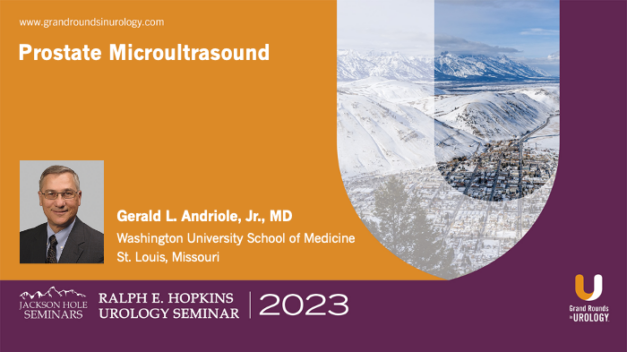Point Counterpoint: Micro Ultrasound
Gerald L. Andriole, Jr., MD, presents the benefits of including micro ultrasound (microUS) in prostate imaging. He begins by noting that microUS is a relatively new technology compared to multiparametric magnetic resonance imaging (mpMRI).
Dr. Andriole presents examples of the detailed prostate images produced by microUS. He discusses the Prostate Risk Identification using MicroUltraSound (PRIMUS) classification system, intended as an analog to PRI-RADS, and the training required for practitioners using microsUS. He presents video examples of microUS-guided versus MRI-guided biopsies.
He concludes by comparing the specificity, sensitivity, and NPV of mpMRI and microUS biopsies in identifying clinically significant cancer. He presents recent studies which indicate that microUS alone may be as effective as mpMRI alone in the context of biopsies.
Read More



